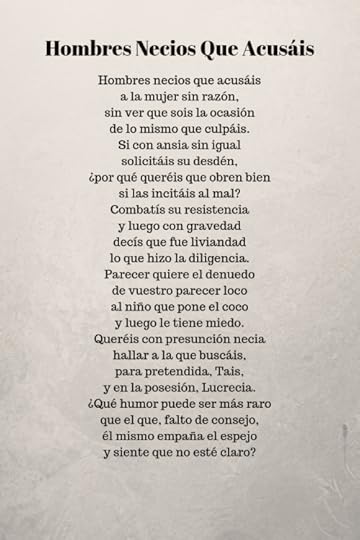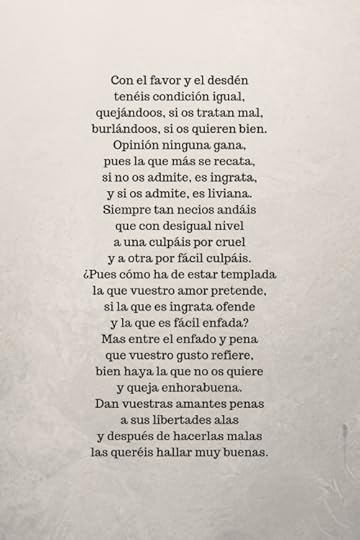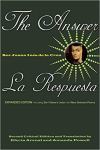C.E. Flores's Blog, page 44
April 11, 2019
A to Z Blogs about Mexico — Jill’s Journeys
[image error]
I’m pleased to reintroduce you to Jill, blogger at Saltillo Expats, Loving the Land of the Flour Tortilla (Meximamma) and Jill’s Journeys.

I came 19 years ago for a study abroad semester. Then I met my husband. I came back 15 years ago to see if he was a keeper. He was. Finally, I came back for good 10 years ago after we got married.
Now I write at Jill’s Journeys (jillmichelledouglas.com) because that URL will never make me cringe. It was still my second choice name because Jill Douglas is apparently a famous rugby commentator in the UK. My own name was already taken!
Refraining from disclosing too much personal information. I’m an open book from the Midwest, where we trust most people. My husband is from Mexico City, where they believe everyone is out to get them. (That’s only a slight exaggeration, for all those chilangos who are going to protest that description!) He does not yet know that I have a blog named jillmichelledouglas.com, and it might just be better if he continues to be oblivious about that. 
April 3, 2019
Bye Bye Boys
[image error]
Apparently, the birth of the last pregnant ewe on our compound was the catalyst to sell, sell them all, for my husband. Of course, the outstanding debt on Cookie, the pregnant mare, was another incentive. Anyway, Preggers had two cute little lambs, a boy and a girl, but my husband wasn’t happy. They seemed to be more Pelehuey rather than Charol, meaning they didn’t have the fluffy fur of the mama and must have taken after the dad. Not like my husband has ever sheared the sheep we’ve had now for a year, so what difference does it make if they had fuzzy wool or not?
Anyway, mama and babies went to live with the neighbor down the road. They seem happy enough when I see them occasionally romping through the underbrush in La Yacat.
So then ALL the spare machos had to go. That meant the Borrego Boys, the Chivo boys, Salt and Pepper, and Payaso the one singleton in this bumper crop of twins, were loaded up in the back of the truck and headed to Puruandiro. Although it took all day, everyone was sold, most to become the head mucky muck of their own herds, since the macho needs a’changing every few years to minimize inbreeding. Some women I know subscribe to this philosophy as well, but that’s another story.
So that left Zombeta all alone in the back corral. I convinced my husband to move her to the front area so she wouldn’t die of loneliness. Her pitiable bleats were hard on my heart. He did, onto our “patio” that is Cookie’s corral as well. Zombeta was happy.
A few days later, he found a buyer for Zombeta and we are now sheep-free. She lives now at another neighbor’s who has sheep and seems well enough.
Then disaster struck. The mama of the triplets took sick. The whole side of her face swelled up. We went to the animal clinic who said it might be a tumor. Since it happened overnight, we thought it was more likely a bite from something. They gave us some pain medication and sent us on our way.
I suggested that it might be something the rats dragged in because boy do we have rats this year. They have even managed to find a way inside the house. No rat trap has been able to capture a single one. During the week mama goat was sick, my husband managed to kill 15 small mice, although some committed suicide in the water trough, and one HUMUNGOUS ROUS (rat of unusual size) outside, but, you know, there’s always more.
Mama goat died. We had quarantined her and the triplets to the back corral. We moved the orphans back to the main goat coral and bought some milk. Unfortunately, two days later, Spot died too.
Now we thought it might be ticks. When my husband checked animal ears, sure enough, monstrous ticks. He spent the afternoon plucking them out of the ears of goats, dogs, and horses. Then everyone got some powder in the ear and bath. That seems to have done the trick. No one else has died although this morning, it seems like Bunny, one of the triplets doesn’t want to eat. That doesn’t bode well.
We are trying to stay on top of these mouse and tick infestations and so far are ahead of the game. Now, we are just waiting for Cookie to have her baby, it ought to be any day now.
April 1, 2019
A Woman’s Survival Guide to Mexican Healthcare
April is a time of awakening in many parts of the world. Spring has arrived, flowers are beginning their festive fashion show, the sun is shining. What a perfect month for healing!
To that end, there are several noteworthy organizations working tirelessly to help others heal that have chosen April as the month to bloom and grow awareness.
[image error]
April is National Sexual Assault Awareness & Prevention Month. The idea is to raise public consciousness about sexual violence and how communities can prevent it. This year, the campaign theme is I ASK with the focus on consent in everyday interactions.
[image error]
The first Tuesday of April, this year on April 2, is National Sexual Assault Awareness Day of Action. The awareness color is teal. The outreach events scheduled for this day are designed to teach us that sexual assault is not just a women’s issue, it’s everyone’s issue.
[image error]
It breaks my heart that there even needs to be a day to raise awareness about the sexual abuse of children. The Global Day to End Child Sexual Abuse is the second Sunday in April, and this year is observed on April 14. The Innocence Revolution sponsors it and it was created to launch a global crusade to protect the world’s children.
[image error]
April 4 is RAINN Day (Rape Abuse Incest National Network). According to information gathered by the organization, every 92 seconds, an American is sexually assaulted and every 9 minutes, that victim is a child. RAINN focuses on changing public policy, national education and support services for survivors. (See Rape Culture)
[image error]
April is also Genocide and Human Rights Awareness Month. In case you believe that this is something that doesn’t pertain to you, here’s a list of the Eight Stages of Genocide.
Classification (‘Drug dealers, criminals, rapists’: What Trump thinks of Mexicans)
Symbolization (The Symbolism of the Border Wall)
Dehumanization (Trump ramps up rhetoric on undocumented immigrants: ‘These aren’t people. These are animals.’)
Organization (The Pentagon extends US troop mission at southern border for 9 more months)
Polarization (These policy changes will impact legal immigrants in the U.S. in 2019)
Preparation (Immigration Detention)
Extermination (DEATHS BY BORDER PATROL SINCE 2010)
Denial (Trump administration rejects responsibility for death of 7-year-old girl in Border Patrol custody)
While genocide encompasses men, women, and children equally, femicide is the systematic elimination of a group of people based solely on their gender and is a real issue in many countries today. (See also Ni Una Mas and Surviving Kakistocracy)
[image error]
The families of victims of femicide often never receive justice. National Crime Victims Rights Week is April 7-13. The theme Honoring Our Past, Creating Hope for the Future and focuses on a future of crime victim services that is better than what has gone before.
Now that you are aware of these pressing issues, here are some events aimed at healing.
[image error]
The last Saturday of April is World Healing Day. Their mission is to encourage yoga, meditation, Reiki, art healing, music healing and healing prayer occasions. Check out their site for local events. (See also Alternative Medical Practitioners in Mexico)
[image error]
April 7 is National Girl Me Too Day. This organization was established to promote relationship stability among women and encourage healing, empowerment, and education of women of all ages.
[image error]
April 7 is also World Health Day sponsored by WHO. Many countries, including the United States, do not have universal health coverage, this year’s focus. It is the World Health Organization’s goal to increase the accessibility of health care services globally. (See also A Little About Healthcare in Mexico)
[image error]
National Healthcare Decisions Day is April 16. Preparing for a health emergency is no easy task and NHDD is committed to educating the public and health care providers about this issue. (See also Overview of Travel MedEvac Insurance)
[image error]
Lest we overlook simple healing methods, April 19 is National Garlic Day. Garlic really is a super healthy vegetable (or herb) and a key factor in the treatment and prevention of a variety of diseases. (See Garlic Tea)
My contribution to April’s healing is small in comparison. A Woman’s Survival Guide to Mexican Healthcare is finally ready for release. The book covers the basics of the Mexican national healthcare system as it stands now, the reality of sexual assault, femicide, and abuse in Mexico, the role of the traditional curandera, and herbal remedies as alternative healing practices. Women living in all parts of Mexico (and Guatemala) candidly shared their health and wellness experiences so that other women will be better informed.
It is my hope that this book in some way empowers women who have moved to Mexico to have some measure control of their own healing. To that end, you can get it FREE on Amazon for the next few days.
[image error]
March 30, 2019
Playing Tourist — An SOTB Bloggers Compilation
Do I have a treat for you! Last year, the ladies in the SOTB Bloggers group worked together to complete the A to Z Blogging Challenge. We picked the topic of traveling in Mexico. We gathered our travel posts together and are proud to present Playing Tourist for your reading pleasure.
You’ll be able to enjoy our travel adventures in 45 places across Mexico, including everywhere from the most obscure little towns to the bustling metropolis of Mexico City.
The best part is that you can download Playing Tourist FREE in honor of Virtual Vacation Day! You did know that March 30 was Virtual Vacation Day right? Well, if you haven’t planned ahead, consider this little book your passport to your Virtual Vacation in Mexico.
March 27, 2019
Master Your Money Super Bundle
If you’ve been a reader for a while, you’ve seen over the years the different ways we’ve attempted to eke out an existence in rural, central Mexico. We’ve done everything from providing taxi service to wives visiting their husband in jail to selling second-hand goods at Ye Olde Crappe Shoppe. In fact, I’m working on a book compilation of our business disasters (with a few successful ventures thrown in for good measure). Keep your eyes peeled for that baby!
In the meantime, Ultimate Bundles is offering another one of their amazing collections. This time the topic is Master Your Money! This money-savvy bundle contains 13 eBooks, 9 printables & workbooks, 12 eCourses, and 11 videos all designed to help you improve your finances.
Topics include:
Better Budgeting
Defeat Debt
Family Finances
Increasing Your Income
Managing Money
Money Mindset
Saving Money

 Don’t wait too long! This bundle is only available from Wednesday, March 27 to Monday, April 1, 2019.
Don’t wait too long! This bundle is only available from Wednesday, March 27 to Monday, April 1, 2019.
******
[image error]

March 25, 2019
Book Review–Echoes from the Wall: Real Stories of Mexican Migrants By Judy King
[image error]
This quote by Carlos Fuentes epitomizes Echoes from the Wall: Real Stories of Mexican Migrants by Judy King. With so much division being fostered these days by politicians with private agendas, it’s hard to see the similarities we all share. Judy King does an excellent job both sharing stories of Mexican migrants and the recent U.S. policy change that are affecting them. [image error]
In Echoes from the Wall, you’ll meet Varo, Moises, Ramon, Arturo, Roberto, Jose, and Ken who are sometimes documented, sometimes not migrant workers. Then there are special circumstances:
Erica, a promising, bright young scholar accepted at Yale who is unable to get a student visa.
Rafael, married to a U.S. citizen and father of 2 U.S. citizens, who is unable to obtain residency.
Leo, a wounded veteran, deported from the country he lived in since he was 3 years old.
Lalo, whose house is filled to overflowing with his brother’s wives and children.
You’ll also see the facts about remittances sent to Mexico, border facial recognition policies, Legal Permanent Residence, the effects of the Border Wall on wildlife, the high cost of crossing the desert into the U.S. and the illegality of providing food, water, and medical treatment to migrants, the damage to children separated from their parents, the truth about healthcare and taxes for migrants, whether migrants are more apt to be criminals than U.S. born citizens, who is financing the mega-detention centers, and how the Bracero work program began the immigration cycle from Mexico to the U.S.
Additionally, you’ll read about the importance of family to the Mexican people, Saint Toribio, the patron saint of travelers, La Virgen de Guadalupe and her iconic presence on both sides of the borders.
Echoes from the Wall ends with a list of both fiction and non-fiction books for further reading about Mexican migrants and the immigration situation as it stands in the U.S.
This well-researched book poignantly tells the story of those who otherwise might not be heard. Tony Burton, Arturo Garcia, and Richard Rhoda contributed to clarifying once and for all who stands to gain by the propagation of an immigrant crisis in the United States.
You can read more about Judy King here.
March 23, 2019
Failing at your own business–Content Writing
[image error]Those antennas are helping some with the stability of the internet. It still goes out randomly. I’ve cut my online teaching hours to the bare minimum. However, if I ever want to get a new moto, I need to earn more money than bare-bones survival income.
In December, I made an effort to find another sort of job. I must have filled out at least a dozen online applications for virtual assistants, bloggers, copywriters, and freelance writers. Finally, at the beginning of February, I heard back from one.
The position was for a content writer. With Google changing up how things are indexed and classified and rated every few months, everyone needs more content on their sites just to get noticed, whether they are bloggers or merchants. So content writing is becoming the in-demand job online.
Even though I passed the initial screening, that didn’t mean I had the job. I was given two articles to write, one was about climate change and the other was about men’s bicycles. I had no problems with the climate change topic even though it was considerably longer than most of my posts at 2500 words.
However, I completely bombed the men’s bicycle article. I had a hard time finding information for bikes in the price range I was supposed to focus on. I had never written a Best of type article before, so my formatting was WAY off. Not to mention, this article was also 2500 words.
In order to turn it in, I needed to have a Grammarly grade of at least 90 percent. Grammarly is like an online spell/grammar checker. Grammarly decided my writing was only worth 88 percent. Even after going through paragraph by paragraph, I couldn’t improve. I had to use the Grammarly Premium app to find those two unclear antecedents that were holding me up.
So now at 90%, I turned in my article and the boss was flabbergasted, not in a good way, mind you. He said I was totally off. He gave me some suggestions, cleared up what I was supposed to be researching, sent me a sample article and asked if I would do it again. He said that my writing was good and they normally didn’t give second chances, but he thought I could do this. Oh, and could I have it in by Monday morning?
So I worked over the weekend because I really wanted this job. When the internet drops, I can go and do something else for a while, and pick back up with my writing when it decides to work again. So much less stress than dropping connection in the middle of a live class!
I also tried out Hemingway Editor, which I’d heard about but had never used. Hemmingway will tell you what grade level you are writing at based on the complexity and length of your sentences. It will suggest ways you can “dumb-down” your writing since the average reader in the U.S. reads at about a 7th-grade level. Short and clear sentences, in the manner of Hemingway (hence the name), are the key.
Just as I was finishing up my revision, I accidentally deleted the file in Google Docs. That gave me about 10 minutes of pure panicked-induced adrenalin before I figured out how to restore a previous version. Whew! I lost some information but not the entire article.
After more hours than I could count, I finished the article and sent it back. It was perfect. I got paid for both articles, a prompt Paypal deposit, not like that Canadian lady that still hasn’t paid me. Then I got two more articles.
One was another Best of type article, only this time on hot weather tents. I nailed it the first try! The second one was a review article, which I hadn’t done previously. This was a whopping 3,000 words on a prepared meal delivery program–you know, like Meals-on-wheels. I was confused about whether I was supposed to be reviewing the product or reviewing reviews about the product. My article was rejected.
The third week, he only sent me one article so that I would have time to redo the review article. Since my class schedule was so minimal I had no problem fixing the article and completing the new one, about water toys. There was a bit of a problem with a 4% similarity with another site that reviewed two of the same toys. I was introduced to Copyscape, which will search out any possible plagiarism issues online. Since my boss thought I didn’t mean to “copy” he asked me to reword the descriptions, which took like 5 minutes to do.
I did so well with that, he sent me the second article, this one about train tables. I finished by Wednesday, averaging one article or rewrite per day.
This job has been wreaking havoc with my self-esteem though. Being rejected is never easy. Having my writing rejected was even worse. My best online buddy Daisy kept up a constant flow of encouragement–reminding me there was a learning curve for any new job and that I was more than capable of doing this one, with a little practice. My husband was supportive in his own way–he said it was good I’m learning new things at my age–whatever that’s supposed to mean!
I’m hoping that next week, I can complete both articles without a problem making me MASTER OF THE WRITING UNIVERSE or some such totally cool person. Meanwhile, since I’m done with those articles, I’m working on that book on Mexican healthcare that’s been taking me so long to finish!
March 21, 2019
Benito Juarez’s Birthday
There isn’t hardly a town in Mexico that does not have a street named after President Benito Juarez so it’s no surprise that his birthday is a national holiday. Benito Pablo Juárez García was born on March 21, 1806, to Brígida García and Marcelino Juárez, Zapotec peasants. After the death of not only his parents but also his grandparents, he was raised by an uncle. He became a servant in the same household as his older sister in Oaxaca and began formal schooling at age 12 when a prominent citizen arranged for him to attend seminary school. He later went on to study law, graduating in 1834. Juarez was elected to the Oaxaca city council in 1831 and appointed as a civil judge in 1841.
In 1842, he married Margarita Eustaquia Maza Parada, the daughter of the man he served as a child. Margarita was of upper class, Italian descent and 20 years younger than her husband. The two had 12 children (including twin girls) together, however, 5 died in childhood. Benito Juarez also had two children with a woman named Juana Rosa Chagoya prior to his marriage, Tereso and Susana. There’s isn’t much information about Juana although it seems she died before Juarez married Margarita. Although most biographies record that Juana Rosa was the mother of both children,Tereso had a different last name than Susana which makes it appear as if they had different mothers. (Tereso Juarez Ortiz/Susana Juarez Chagoya). One source names Tereso’s mother as Cruz Ortiz. While Susana was always acknowledged as the natural daughter of Benito Juarez, Tereso was denied legitimacy when he tried to obtain it after Juarez’s death. Susana was said to be mentally deficient in some way and never married which was convenient for the legitimate heirs of Margarita Maza.
Benito Juarez became president of Mexico in 1858 when President Ignacio Comonfort was forced to resign. Juarez was the head of the Supreme Court, so by order of succession, he assumed the position of president and remained president until his death in 1872.
He was president during the Reform War (1858-1860) which was a civil war between Liberals and Conservatives. He was also president during the French Invasion (1862-1867) although he and his family lived in exile for some time.
Juarez was a Freemason and opposed to the power of the Catholic church in Mexico. La Ley Juarez made it so that neither the military nor the clergy were exempt from civil laws. La Ley Lerdo went one step further and confiscated church lands not directly used for religious purposes. It also abolished communal land which impacted the indigenous communities as well. Although Juarez did not draft La Ley Lerdo, he did pass the Law of Nationalization of the Ecclesiastical Property (Ley de la Nacionalización de Los Bienes Eclesiásticos) in 1859 absorbing church-owned assets and properties into the national treasury.
Further undermining the authority of the church, Juarez created the Civil Registry for births, marriages, and deaths. Juarez also secularized cemeteries and hospitals. He decreed freedom of religion in 1860 (Ley de Libertad de Cultos) and established national holidays apart from the Catholic church as part of what is known as Los Leyes de Reforma.
Did you know that Benito Juarez was honored as Companion of the Third Class of the Pennsylvania Commandery by the Military Order of the Loyal Legion of the United States (MOLLUS) in 1866 which was typically reserved for civilians who made a significant contribution to the Union war effort? He and his wife spent some time in exile in the US and even met President Lincoln. That isn’t something that would happen nowadays though. Just think, an indigenous man from Mexico with his white wife and mixed-race children seek asylum in the US? Not on your life buster!
[image error]
Benito Juarez is the face you’ll see on the 20 peso bill along with the scales of justice. On the back is the archeological site Monte Albán found in Oaxaca, the symbol for the Bank of Mexico and the symbol of a Cojijo.
[image error] [image error]
The 20 peso bill is heading out the door to be replaced with a coin. However good ol’ Benito is the new face of the 500 peso bill, replacing Frida Kalho and Diego Rivera. This new bill looks enough like the 20 peso bill, down to the color, that some confusion is inevitable, at least until all the 20 peso bills are finally out of circulation.
*****
Do you want to learn more about Mexican holidays and traditions?
Then check out A Woman’s Survival Guide to Holidays in Mexico!
March 18, 2019
Aniversario de la Expropiación Petrolera–Oil Expropriation Anniversary
On March 18, 1938, President Lázaro Cárdenas appropriated all petroleum reserves, facilities, and companies in Mexico for Mexico claiming that all mineral and oil deposits belonged to the government. In June of the same year, Petróleos Mexicanos (PEMEX) was formed which until very recently maintained exclusive rights over exploration, extraction, refining, and commercialization of every drop of oil in Mexico.
Now the history books like to say that this is because the foreign oil companies were mistreating their workers but really, it was a shrewd move to keep the wealth found in Mexico in the country. It looked like the whole shebang was going to falter for awhile, but fortunately, World War II created a huge demand and Mexico shot to oil stardom. Now Mexico is the fourth largest oil producer in the Western Hemisphere and the eleventh largest producer of oil in the entire world.
So here we have this national holiday in honor of this momentous event except there have been some changes under President Peña Nieto. In 2013, he changed the constitution to allow direct foreign investment in the oil sector which was approved by Congress in 2014. While things seem to be slow starting, experts predict that this was another shrewd move by the Mexican government.
[image error]
Of course, even if the government seems to be making out well with the change, there has been no benefit to the average Mexican consumer. Gas prices continue to skyrocket while wages remain stagnant. (México la evolución de los gasolinazos 1940 – 2017) Then of course, the gaspocalypse in January didn’t make matters any easier.
So Happy Oil Expropriation Anniversary to you too!
*****
Do you want to learn more about Mexican holidays and traditions?
Then check out A Woman’s Survival Guide to Holidays in Mexico!
March 16, 2019
Women in Mexican History–Sor Juana de la Cruz
Did you know that a radical feminist Mexican woman poet is featured on the 200 pesos bill? So even though Frida’s gotten the boot (she and Diego have been replaced by Benito Juarez on the new 500 pesos bill), there is still some representation!
[image error]
Juana Inés de Asbaje y Ramírez de Santillana was born on November 12, 1648, near Mexico City in San Miguel Nepantla which is now called Nepantla de Sor Juana Inés de la Cruz. Her mother, Isabel Ramírez de Santillana de Cantillana, belonged to the Criolla section of the Mexican population. Her father was a Spanish Captain by the name of Pedro Manuel de Asbaje y Machuca. As she was illegitimate, her baptism lists her as ““hija de la Iglesia” (a daughter of the Church) rather than her father’s daughter. She was the second of three daughters born to Pedro and Isabel. Her mother had three more children with Diego Ruiz Lozano later, whom she didn’t marry either.
[image error]
Juana was raised on her grandfather’s hacienda in Amecameca which is pictured on the reverse of the 200 peso bill. She was somewhat of a prodigy if the accounts are to be believed. Educating females was strictly forbidden however somehow Juana was able to write in Latin by age three, do account by age five and composed a poem on the Eucharist at age eight.
Her astonishing accomplishments didn’t stop there. As a teenager, she was versed in Greek philosophy, teaching Latin to younger children and fluent enough in Nahuatl, which she learned from the slaves on the hacienda, to write poems in that language.



In her teens unable to attend the university because of her gender, she became a lady-in-waiting at the viceroy’s court. The Vicereine Leonor Carreto became her patroness. She declined several offers of marriage and instead entered the St. Joseph Monastery in 1667 as a postulant. She took her vows in 1669 at a different monastery, El Convento de San Jerónimo, because she desired “Vivir sola… no tener ocupación alguna obligatoria que embarazase la libertad de mi estudio, ni rumor de comunidad que impidiese el sosegado silencio de mis libros” (to have no fixed occupation which might curtail my freedom to study).
Although she was a favorite of the court and had several powerful patrons, she wasn’t beloved by all. One of these, the bishop of Puebla, Manuel Fernández de Santa Cruz, told her she should give up writing as it was not befitting for a woman. Her vehement defense of education for women earned her other enemies in the church.
For her scandalous words and activities (writing heresy in the form of promoting educational opportunities for women and other such nonsense), she was forced to do penance which included giving up her books, musical and scientific instruments.
Sor Juana contracted the plague during her ministrations to other nuns and died on April 17, 1695.
Mexico remains a misogynist country and yet Sor Juana has been honored, not only by being featured on the 200 pesos bill but also by having her name inscribed in gold on a wall at the congress building in 1995. Furthermore, numerous schools throughout Mexico have taken her name including the convent where she spent most of her life.
[image error]You have to admit, some of her poems are pretty intense. You can find several translations of Sonnet #145 here. You can also find an English translation of Hombre Necios (Foolish Men) here. I don’t think I’m up to the task myself. If you would like a more extensive selection of Sor Juana’s poetry, check out Sor Juana Inés de la Cruz: Selected Works.



Two highly recommended books about Sor Juana as both product and prisoner of her time include Sor Juana: Or, the Traps of Faith by Octavio Paz and The Answer/La Respuesta by Sor Juana Inés de la Cruz by Electa Arenal.




